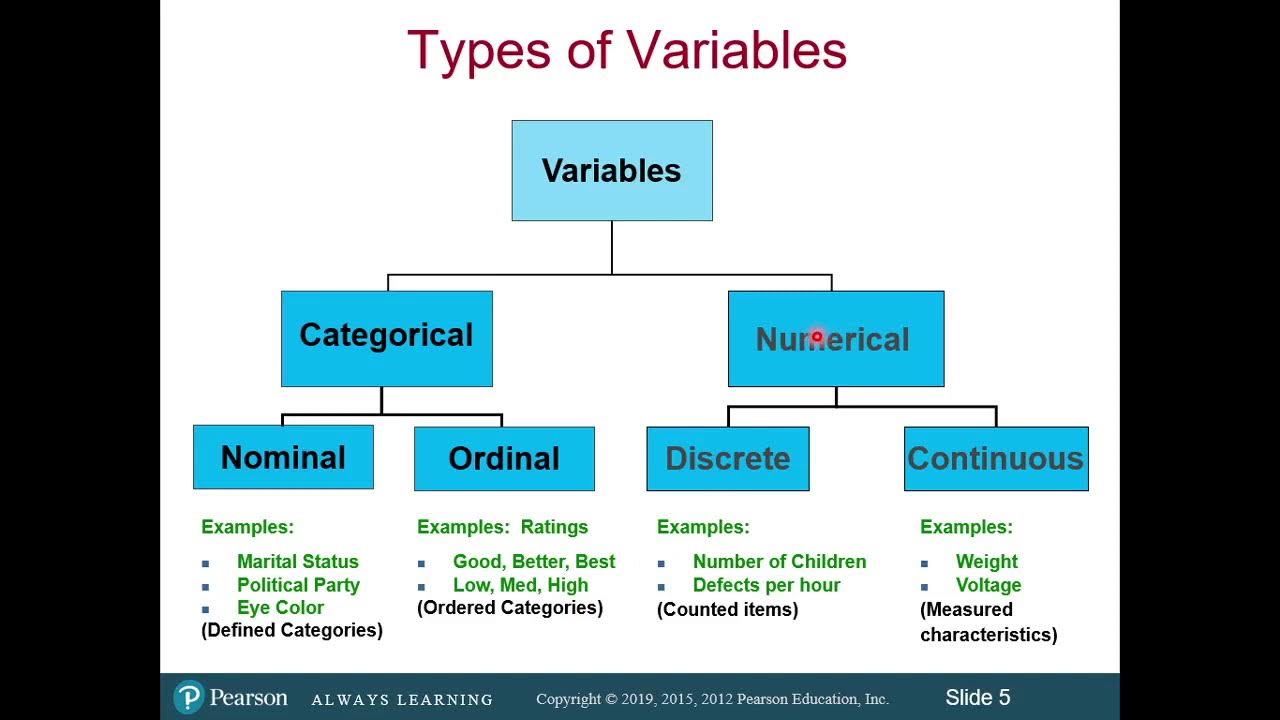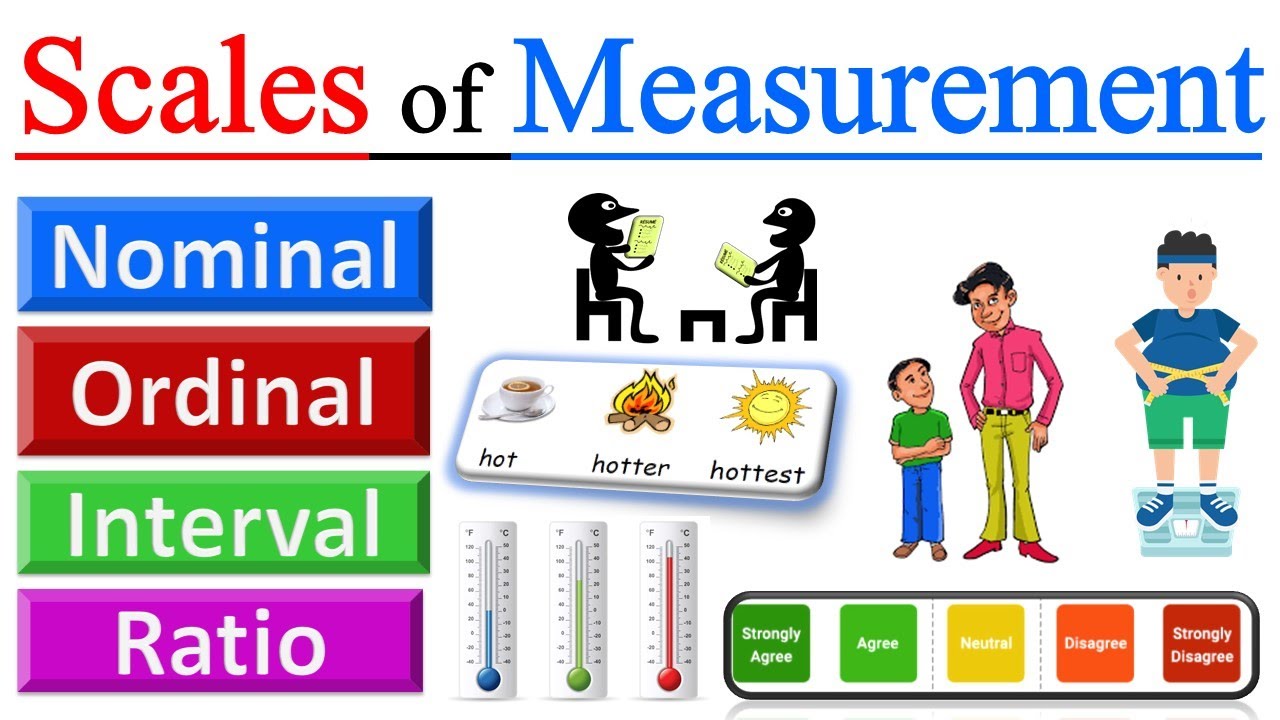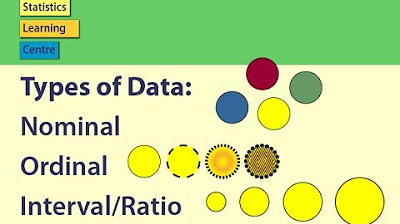Qualitative Data - Why ? What? || Nominal Data || Ordinal Data || Statistics for Beginners
TLDRIn this video, we discuss the importance of studying different data types in statistics, focusing on qualitative and quantitative data. We delve into the specifics of qualitative data, explaining its two main types: nominal and ordinal. Nominal data describes qualities without any numerical measurement or rank, such as hair color or nationality. Ordinal data, however, can be ranked but not measured numerically, like clothing sizes or grades. The video highlights the distinct properties and permissible operations for each type, emphasizing their significance in statistical analysis. Subscribe for more informative content.
Takeaways
- 📚 Studying data types is essential for selecting the appropriate statistical and mathematical techniques for analysis.
- 🔍 Different data types require different analyses, highlighting the importance of understanding data characteristics before applying statistical methods.
- 📈 Linear Regression is an example of a technique that can only be applied to continuous data, unlike logistic regression, which is suited for categorical data.
- 🔑 Data in statistics can be broadly categorized into two main types: Qualitative and Quantitative.
- 🎨 Qualitative data describes the quality of things and cannot be measured numerically, such as hair color or nationality.
- 📊 Quantitative data represents quantities and can be measured numerically, like the weight of students in a class.
- 📝 Qualitative data, also known as categorical data, includes examples like hair color, country of birth, and clothing sizes.
- 🔑 Qualitative data can be further divided into Nominal and Ordinal data types.
- 🔠 Nominal data cannot be ranked or ordered and includes properties like hair color where no numerical measurement is possible.
- 🔢 Ordinal data has a rank or order but lacks equidistance between categories, such as clothing sizes where 'Large' is greater than 'Medium'.
- 📉 Mathematical operations on Nominal data are limited to grouping into categories, calculating frequencies, percentages, and proportions.
- 📈 Ordinal data allows for basic sorting and comparison operations, but still does not permit addition or multiplication.
Q & A
Why is it important to study different types of data in statistics?
-Studying different data types is crucial because each data type requires specific analyses and certain statistical and mathematical concepts are applicable only to particular types of data. Understanding data types helps select the most appropriate techniques for analysis.
What is the difference between qualitative and quantitative data?
-Qualitative data describes the quality of things and cannot be measured numerically, such as hair color. Quantitative data, on the other hand, represents quantities and can be measured numerically, like the weight of students.
Can you give an example of a statistical technique that is specific to a certain type of data?
-Linear regression is an example of a technique that is specific to continuous, quantitative data and cannot be applied to categorical data. Conversely, logistic regression is suited for categorical data.
What is nominal data and what are its properties?
-Nominal data is a type of qualitative data that cannot be measured numerically and has no inherent order. It includes properties such as: 1) non-numerical measurement, 2) no rank or order, 3) non-equidistant categories, and 4) absence of a meaningful zero.
What mathematical operations can be performed on nominal data?
-With nominal data, you can only group it into categories, calculate frequencies, percentages, proportions, and find the central point. Operations like addition, subtraction, multiplication, or division are not applicable.
What is ordinal data and how is it different from nominal data?
-Ordinal data is a type of qualitative data that has a rank or order but is not equidistant. Unlike nominal data, ordinal data can be sorted and compared using greater than or lesser than operations, but it still cannot be measured numerically or involve operations like addition or multiplication.
What are some examples of ordinal data?
-Examples of ordinal data include opinions (e.g., strongly agree, agree, neutral, disagree, strongly disagree), clothing sizes (e.g., small, medium, large, extra-large), and grades (e.g., A, B, C, D, F).
How can the understanding of data types help in the application of algorithms?
-Understanding data types is fundamental to knowing which algorithms can be applied to a given dataset. It ensures that the chosen algorithm is appropriate for the data's characteristics, leading to more accurate and meaningful results.
Outlines
📚 Understanding Data Types in Statistics
This paragraph introduces the importance of studying different data types in statistics, emphasizing that various data types necessitate distinct analytical methods. It explains that specific statistical and mathematical concepts apply only to certain data types, thus knowledge of data types is crucial for selecting appropriate techniques. The example of linear regression being applicable to continuous data but not categorical data, and vice versa for logistic regression, illustrates this point. The paragraph also outlines the two broad categories of data in statistics: qualitative and quantitative, with qualitative data described as non-numeric and focusing on the quality of things, while quantitative data is numeric and measures quantities.
🔍 Deep Dive into Qualitative Data
This paragraph delves into the specifics of qualitative data, which is further divided into nominal and ordinal data. Nominal data cannot be numerically measured, lacks rank or order, is not equidistant, and does not have a meaningful zero. It can only be categorized and sorted, with calculations limited to frequencies, percentages, proportions, and central points. Examples such as nationality, gender, and hair color are provided to illustrate nominal data. Ordinal data, while also not measured numerically, has a rank or order and can be sorted, although it does not allow for equidistant comparisons or mathematical operations like addition or multiplication. Examples include opinions, clothing sizes, and grades, with the paragraph concluding that ordinal data reflects a hierarchy or order, unlike nominal data.
Mindmap
Keywords
💡Data Types
💡Qualitative Data
💡Quantitative Data
💡Nominal Data
💡Ordinal Data
💡Linear Regression
💡Logistic Regression
💡Categorical Data
💡Frequencies
💡Proportions
💡Central Point
Highlights
Studying different types of data is crucial as it influences the choice of statistical and mathematical techniques applicable to a specific data type.
Linear Regression is suitable for continuous data, whereas logistic regression is more appropriate for categorical data.
Data in Statistics can be broadly categorized into Qualitative and Quantitative data.
Qualitative data describes the quality of things and cannot be numerically measured, such as hair color.
Quantitative data pertains to quantities that can be measured numerically, like the weight of students.
Qualitative data, also known as categorical data, includes non-numerical characteristics like hair color and country of birth.
Qualitative data is further divided into Nominal and Ordinal data types.
Nominal data cannot be numerically measured and has no inherent order, such as gender or nationality.
Ordinal data, unlike nominal, has a rank or order but is not equidistant, such as clothing sizes.
Mathematical operations on nominal data are limited to grouping and calculating frequencies, percentages, and proportions.
Ordinal data allows for sorting based on basic comparison operations, reflecting a hierarchy.
While ordinal data can be sorted, it does not permit mathematical operations like addition or multiplication.
Examples of ordinal data include opinions, clothing sizes, and grades, which can be ordered but not equidistantly measured.
Understanding the properties and types of qualitative data is essential for selecting appropriate statistical analysis methods.
The video provides a clear distinction between nominal and ordinal data, emphasizing their unique characteristics and limitations.
The importance of knowing data types is underscored for selecting the best statistical techniques and algorithms.
The video concludes by encouraging viewers to share thoughts and questions, fostering an interactive learning environment.
Transcripts
Browse More Related Video

Classification of Variables and Types of Measurement Scales

Scales of Measurement in Statistics - Nominal, Ordinal, Interval, Ratio | Level of Measurement

Nominal, Ordinal, Interval & Ratio Data: Simple Explanation With Examples

SPSS: Understand Ordinal, Nominal & Scale (aka Level of measurment)

Scales of Measurement - Nominal, Ordinal, Interval, & Ratio Scale Data

Types of Data: Nominal, Ordinal, Interval/Ratio - Statistics Help
5.0 / 5 (0 votes)
Thanks for rating: